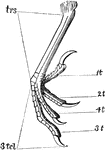
Sweet-scented Vernal Grass
Sweet-scented Vernal Grass (Anthoxanthum odoratum) has three-flowered spreading spikelets. The lateral…

Sweet-scented Vernal Grass
Sweet-scented Vernal Grass (Anthoxanthum odoratum) has three-flowered spreading spikelets. The lateral…
Reed Canary Grass
The Reed Canary Grass (Phalaris arundinacea) has a panicle that is slightly branched, clustered, and…

Reed Canary Grass
The Reed Canary Grass (Phalaris arundinacea) has a panicle that is slightly branched, clustered, and…
Common Millet
The Common Millet (Panicum miliaceum) flowers in large, open, nodding panicles. The leaves are lance-shaped…
Finger-spiked Wood Grass
Fiinger-spiked Wood Grass (Andropogon furcatus) grows about four feet high. The leaves are smooth, the…

Finger-spiked Wood Grass
Fiinger-spiked Wood Grass (Andropogon furcatus) grows about four feet high. The leaves are smooth, the…

Finger-spiked Wood Grass
Fiinger-spiked Wood Grass (Andropogon furcatus) grows about four feet high. The leaves are smooth, the…

Finger-spiked Wood Grass
Fiinger-spiked Wood Grass (Andropogon furcatus) grows about four feet high. The leaves are smooth, the…

Chinese Sugar Cane
The stem of Chinese Sugar Cane (Sorghum nigrum), also known as Sorgho, or Sorgho Sucre, rises from six…
Rice
Rice (Oryza sativa) is a long panicled grass, having, when ripe, some resemblance to oats, the seed…
Wheat
Egyptian wheat (Sorghum bicolor) has long slender stalks growing seven to ten feet. It matures late…

Indian Corn
Maize known as corn by most English-speakers, is a cereal grain domesticated in Mesoamerica and subsequently…
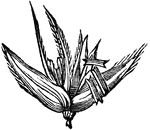
Indian Corn
Maize known as corn by most English-speakers, is a cereal grain domesticated in Mesoamerica and subsequently…
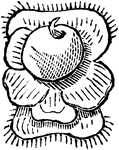
Indian Corn
Maize known as corn by most English-speakers, is a cereal grain domesticated in Mesoamerica and subsequently…

Indian Corn
Maize known as corn by most English-speakers, is a cereal grain domesticated in Mesoamerica and subsequently…

Sainfoin
Sainfion (Hedysarum onobrychis), a hay, is a leguminous plant with many straggling, tapering, smooth,…
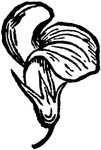
Sainfoin
Sainfion (Hedysarum onobrychis), a hay, is a leguminous plant with many straggling, tapering, smooth,…

Sainfoin
Sainfion (Hedysarum onobrychis), a hay, is a leguminous plant with many straggling, tapering, smooth,…
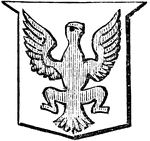
Allerion
"Argent, an allerion gules. ALLERION. An eagle displayed, without beak or feet." -Hall, 1862

School Advance Warning, Black and White
The School Advance Warning assembly should be installed in advance of locations where school buildings…

School Advance Warning, Color
The School Advance Warning assembly should be installed in advance of locations where school buildings…

School Advance Warning, Outline
The School Advance Warning assembly should be installed in advance of locations where school buildings…

School Advance Warning, Silhouette
The School Advance Warning assembly should be installed in advance of locations where school buildings…

Temple of Scrapis at Puzzuoli
On the coast of Naples, near the ancient town of Puzzuoli, stand three marble pillars forty feet in…

Arched Rock
Arched rock is a natural limestone arch formed during the Nipissing post-glacial period, a period of…
Flatworm
Flatworms are flattened, leaf-like forms living in damp places on land, in freshwater streams of ponds,…
Flatworm
Flatworms are flattened, leaf-like forms living in damp places on land, in freshwater streams of ponds,…

Flatworm
Flatworms are flattened, leaf-like forms living in damp places on land, in freshwater streams of ponds,…
Flatworm
Flatworms are flattened, leaf-like forms living in damp places on land, in freshwater streams of ponds,…
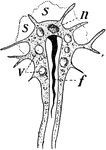
Flatworm
Flatworms are flattened, leaf-like forms living in damp places on land, in freshwater streams of ponds,…
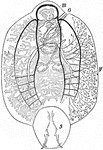
Flatworm
Flatworms are flattened, leaf-like forms living in damp places on land, in freshwater streams of ponds,…

Tapeworm
The cestodes or tapeworms (Toenia solium), are parasitic flatworms. The body is usually of great length…

Fairy-shrimp
The class of crustacea is divided into two sub-classes, Entomostraca and Malacostraca. The first, Entomostraca,…

Cyclops
Cyclops, the representative of a number of lowly forms belonging to the order of Copepods, is one of…
Shrimp
The larger, more useful and more familiar Crustacea belong to the subclass Malacostraca. It comprises…
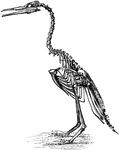
Restoration of Hesperornis regalis
"Hesperornis regalis, (a fossilized restoration) which stood about three feet high, had blunt teeth…
Sceptre with the Dove
"The sceptre with the dove is of gold, three feet seven inches long; the circumference of the handle…
Sceptre with the Cross
"The royal Sceptre with the Cross is of gold; the handle is plain, and the upper part wreathed; it is…

Glyptodon
"Glyptodon (Glyptodon clavipes). The typical and best-known genus of the family Glyptodontidae; the…

Robin
"Robin: Upper parts slate-color, with a shade of olive. Head black, the eyelids and a spot before the…

Wood Thrush
"Wood Thrush. Upper parts, including the surface of the closed wings, tawny-brown, purest and deepest…

Catbird
"Cat-Bird. Slate-gray, paler and more grayish-plumbeous below; crown of head, tail, bill, and feet black.…
Margin Drawing
This margin drawing was created by German artist Albrecht Dürer in 1515. It is found in the prayer…

Brown Thrasher
"Upper parts uniform rust-red, with a bronzy lustre. Concealed portions of quills fuscous. Greater the…

Bow-Billed Thrasher
"Above, grayish-brown, nearly uniform; wing- coverts and quills with slight whitish edging, the edge…

Crissal Thrasher
"Brownish-ash, with a faith olive shade, the wings and tail purer and darker fuscous, without white…

American Dipper
"Adult, in summer: Slaty-plumbeous, paler below, inclining on the head to sooty-brown. Quills and tail-feathers…

Stone Chats
"Bill shorter than head, slender, straight, depressed at base, compressed at end, notched. Wings long,…

Etruscan Vase
This Etruscan vase is an imitation. This vase is of considerable height and is 4 feet tall.

Monumental Brass
The monumental brass is a type of church monument that is made up of a brass wall tablet. This monument…

Reynard the Fox: Reynard's Victory
Reynard the Fox and Isegrim the wolf fight each other. Reynard outsmarts him and knocks him down.

Blue-gray Gnat-catcher
"Grayish-blue, bluer on the crown, hoary on the rump, the forehead black, continuous with a black superciliary…
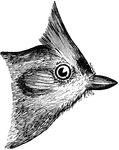
Tufted Titmouse
"Entire upper parts ashy, the back usually with a slight olivaceous shade, the wings and tail rather…
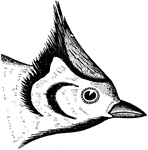
Bridled Titmouse
"Upper parts olivaceous-ash, wings and tail darker, edged with the color of the back, or even a brighter…

Scutellate Laminiplanter Tarsus of a Cat-bird
"Figure shows Scutellate laminiplanter tarsus of a cat-bird. A tarsus so disposed as to its podotheca…
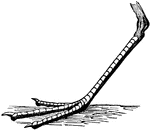
Tridactyle Foot of a Sanderling
"Fig. 39 shows a Tridactyle foot of a sanderling, Calidris arenaria." Elliot Coues, 1884
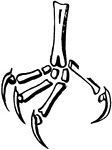
Phalanges of Cypseline Foot
"Fig. 40 Phalanges of Cypseline foot, where the ratio is 2, 3, 3, 3 of Caprimulginae." Elliot Coues,…

